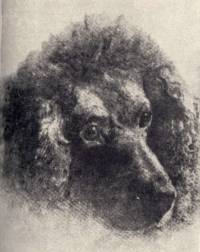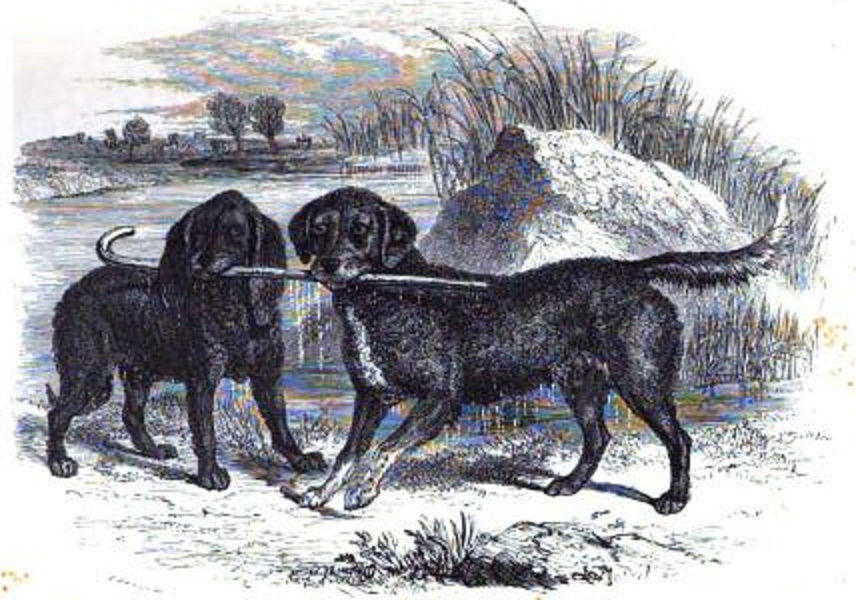
It is probable that the first description of the Irish Water Spaniel dates back to a book printed in 1607, the “Historie of the Foure-footed Beastes,” which describes and illustrates the “waterSpagnel.”
Recent research suggests that the Barbet, Poodle, and Portuguese Water Dog factored into the breed ancestry, but by the 1800s, some cynologists believed that the breed developed in Ireland out of two other breeds, the “South Country water spaniel” and the “North Country water spaniel.” Writing under the pseudonym, “Stonehenge,” the 19th century English sports writer, John Henry Walsh, wrote:
“Of the Irish Water Spaniel there are two kinds: the North of Ireland dog, which is given in the annexed engraving; and the South Country water spaniel, of which I have never seen a well-marked specimen. Both are of a liver colour, but the former has often more or less white, while in the latter this is entirely absent. The northern dog is also longer on the legs, with short ears, having little or no feather on them, and both the legs and tail being also almost free from this ornament, and covered instead with a short curly coat, as is also the rest of the body. The southern dog, on the contrary, has long and well-feathered ears, tail round also, and pointed, never being carried above the back; head covered with a perfect top-knot, coming down over the forehead in a peak. These dogs are valued very highly in Ireland, but they are little known out of that country. The northern Irish spaniel is, however, common enough in England and Scotland.”

The IWS’s modern form likely occurred in the 1830s, development being credited to Justin McCarthy and his dog, “Boatswain.” The breed’s bold and daring retrieves made it a favorite with Irish and English sportsmen, particularly in extremes of cold North Sea waters. By the mid-1870s, the breed’s reputation spread to America where in 1875, it was the third most popular sporting dog in the U.S. For good reason.
